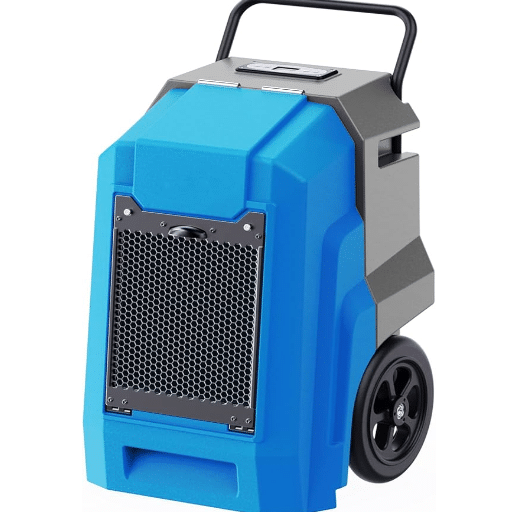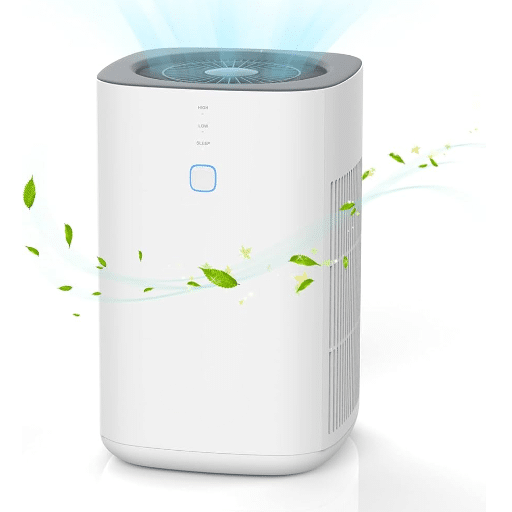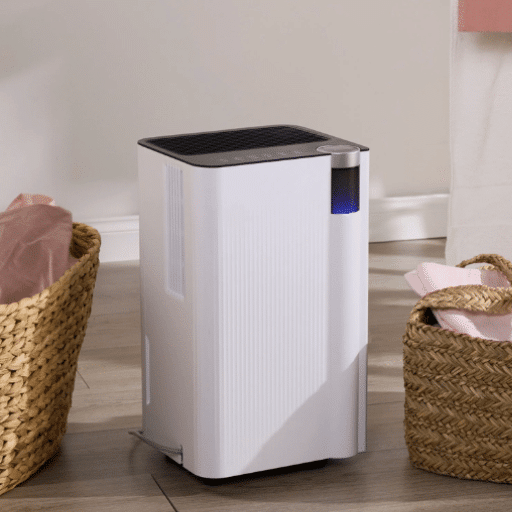Crawl spaces are often overlooked yet crucial areas when it comes to maintaining the health and integrity of your home. Excess moisture in these spaces can lead to a range of issues—from mold growth and wood rot to pest infestations and compromised air quality. That’s where a crawl space dehumidifier comes into play, offering a practical solution to keep your home dry, safe, and energy-efficient. But how much does investing in one truly cost? Understanding the price tag involves more than just looking at sticker prices—it’s about factoring in installation, energy consumption, maintenance, and potential long-term savings. In this guide, we’ll break down the core expenses, highlight essential considerations, and equip you with the knowledge needed to make a smart, informed decision.
What Factors Affect the Cost of Installing a Crawl Space Dehumidifier?
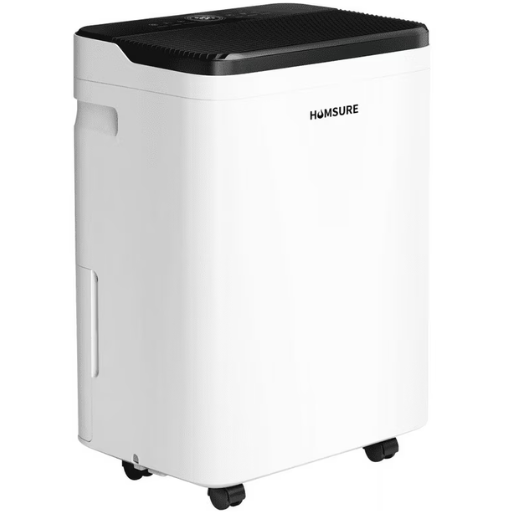
- Type of Dehumidifier
The cost varies depending on the model and capacity. Higher-capacity units designed for larger spaces generally cost more.
- Crawl Space Size
Larger crawl spaces may require more powerful dehumidifiers or additional modifications, increasing overall expenses.
- Installation Complexity
Factors like limited accessibility, the need for ductwork, or electrical upgrades can raise installation costs.
- Features and Technology
Advanced features, such as energy efficiency settings or smart controls, may influence the price of the unit and installation.
- Labor and Professional Expertise
Hiring qualified professionals ensures proper installation but adds to the total cost.
By considering these factors, you can better anticipate and plan for the investment required to install a crawl space dehumidifier.
Understanding Dehumidifier Cost
Dehumidifier costs vary based on size, features, and installation requirements. Portable units typically range from $50 to $300, depending on capacity and additional features. Whole-house models are more expensive, often costing between $1,000 to $2,500, including professional installation. Advanced features like smart controls or energy-efficient designs may increase the price. For accurate budgeting, it’s essential to consider the specific requirements of your space and consult professionals if needed.
Impact of Crawl Space Encapsulation on Costs
Crawl space encapsulation can significantly influence both upfront and long-term costs associated with maintaining a healthy home environment. Encapsulation involves sealing the crawl space with a durable vapor barrier, insulation, and often a dehumidifier to prevent moisture buildup, mold growth, and structural damage. While the initial investment for crawl space encapsulation ranges from $3,000 to $15,000 depending on the size and condition of the space, the benefits often outweigh the costs over time.
Encapsulation improves energy efficiency by reducing the amount of unconditioned air entering the home. According to recent data, homeowners typically save 15-20% on energy bills annually following encapsulation. For a household spending $2,000 per year on energy, this equates to savings of $300 to $400 annually. Additionally, effective encapsulation extends the lifespan of HVAC systems by reducing strain, which may save thousands in repair or replacement costs over the years.
Beyond energy savings, encapsulation protects against structural issues caused by excessive moisture, such as wood rot and foundational damage, which can cost over $10,000 to repair. It also enhances indoor air quality by minimizing allergens and irritants, contributing to better long-term health outcomes for residents.
When evaluating the costs of crawl space encapsulation, it’s essential to consider these combined savings and the increased property value it can provide. Encapsulation is often regarded as an investment that pays for itself over time, offering both financial and quality-of-life benefits to homeowners.
Choosing Between Energy Star and Standard Models
When deciding between Energy Star certified models and standard options, it’s critical to analyze energy efficiency, cost savings, and environmental impact. Energy Star models are rigorously tested to meet specific efficiency guidelines set by the U.S. Environmental Protection Agency (EPA), offering up to 20–30% greater energy savings compared to conventional counterparts.
For instance, refrigerators with the Energy Star label use approximately 15% less energy than standard models, while certified washing machines consume 25% less energy and 33% less water per load. Although Energy Star models typically have a higher upfront cost, they significantly reduce long-term utility expenses, making them a cost-effective choice over time. Research suggests that households using Energy Star appliances save an average of $100 to $150 annually on energy bills.
Additionally, these models minimize environmental impact by lowering greenhouse gas emissions and conserving natural resources. For homeowners prioritizing sustainability and long-term savings, Energy Star appliances present a clear advantage. On the other hand, standard models may appeal to those with tight initial budgets but often incur higher energy costs in the long run. By carefully assessing your home’s energy needs and calculating potential savings, you can make an informed decision that aligns with both financial and environmental goals.
How Does a Basement or Crawl Space Dehumidifier Benefit Your Home?
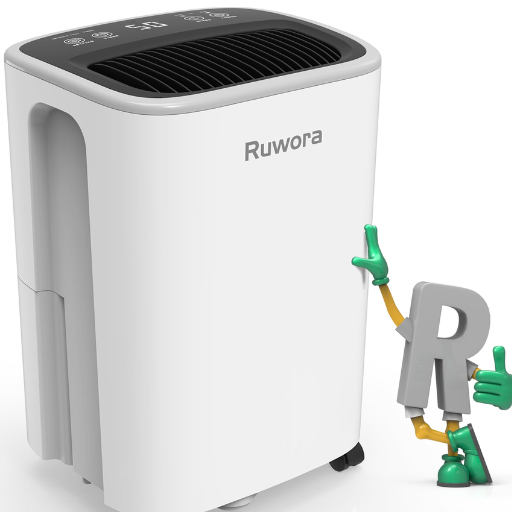
A basement or crawl space dehumidifier helps maintain optimal humidity levels, which prevents the buildup of moisture and reduces the risk of mold, mildew, and structural damage. By keeping these areas dry, it also helps improve indoor air quality, making your home healthier and more comfortable. Additionally, controlling humidity can protect stored items and prevent unpleasant odors, ensuring your basement or crawl space remains a functional part of your home.
Importance of Managing Humidity Levels
Managing humidity levels is essential to maintaining a healthy, efficient, and long-lasting home environment. According to industry experts, the ideal indoor relative humidity should range between 30% and 50%. When humidity exceeds this range, it creates favorable conditions for mold and mildew growth, which can trigger allergies, asthma, and other respiratory issues. Studies show that mold growth can begin within 24 to 48 hours of exposure to high moisture levels, highlighting the urgency of addressing excess humidity promptly.
Low humidity levels, on the other hand, can result in dry skin, irritation of the respiratory tract, and even damage to wooden furniture or flooring as the material shrinks and cracks. Regulated humidity also helps protect electronics and household items that are sensitive to moisture damage.
Improving indoor air quality isn’t just about comfort—it can also save energy. For example, high humidity can make a home feel warmer, causing occupants to overuse air conditioning, which leads to higher energy expenses. Dehumidifiers and HVAC systems integrated with humidity control can significantly reduce energy consumption by maintaining optimal conditions. The EPA notes that a properly ventilated and dehumidified home can increase energy efficiency by up to 15%, translating into both environmental and financial benefits.
By actively monitoring and managing humidity, homeowners can create a more sustainable and health-conscious living environment while preserving the structural integrity of their property.
Preventing Water Damage and Mold
Preventing water damage and mold growth is essential for maintaining a safe, durable, and healthy home environment. Excess moisture is the primary factor contributing to these issues, making proactive measures crucial. One of the most effective strategies is to ensure proper drainage around the home. According to industry data, homes with poor drainage systems are 5-10 times more likely to experience water intrusion, which can lead to mold growth within 24-48 hours of moisture exposure.
Installing or maintaining a sump pump in basements can help prevent flooding during heavy rains, significantly reducing the likelihood of water damage. Additionally, sealing foundation cracks and applying water-resistant coatings to vulnerable areas provide critical barriers against water infiltration. Experts suggest that annual inspections of roofing, gutters, and downspouts ensure they are free of debris, capable of redirecting water effectively, and in good repair.
Indoor humidity levels should consistently remain between 30-50% to deter mold growth, as levels above 60% create ideal conditions for spores to thrive. Using dehumidifiers, particularly in basements and poorly ventilated areas, can stabilize these levels and neutralize potential risks. Furthermore, fixing leaks in plumbing promptly is essential, as even minor drips can accumulate over time and foster mold-friendly conditions.
Finally, homeowners can invest in mold-resistant building materials like drywall and paints for areas prone to dampness. Studies reveal that such materials can reduce the risk of mold growth by up to 80%, making them a wise long-term investment. These combined efforts not only safeguard a property’s structural integrity but also ensure a healthier living space for its occupants.
Enhancing Air Quality and Comfort
To enhance air quality and maintain optimal comfort levels, several strategies can be implemented, underpinned by scientific data and expert insights. One effective step is using high-efficiency particulate air (HEPA) filters, which can capture up to 99.97% of airborne particles, including dust, pollen, and some bacteria, significantly reducing allergens and pollutants within indoor spaces. Regular maintenance of HVAC systems is equally crucial; studies emphasize that clean and well-maintained systems improve air circulation and prevent the spread of contaminants.
Additionally, incorporating indoor plants has shown measurable improvements in air quality. Certain species, such as peace lilies and spider plants, are known for their ability to filter out harmful toxins like formaldehyde and benzene while increasing oxygen levels. Proper ventilation is another key factor; implementing energy recovery ventilators (ERVs) can enhance the exchange of indoor and outdoor air, maintaining balanced temperatures and fresh airflow while conserving energy.
For optimal comfort, controlling humidity levels is essential. Maintaining indoor relative humidity between 30-50% helps prevent the growth of mold and mildew, creating a more pleasant environment. Smart technologies, like air quality monitors, allow real-time tracking of pollutants, humidity, and temperature, empowering homeowners to make informed adjustments that directly benefit their living conditions. Combining these approaches results in healthier, more comfortable indoor spaces that cater to both physical well-being and life quality.
What is the Typical Cost to Install a Whole-House Dehumidifier?
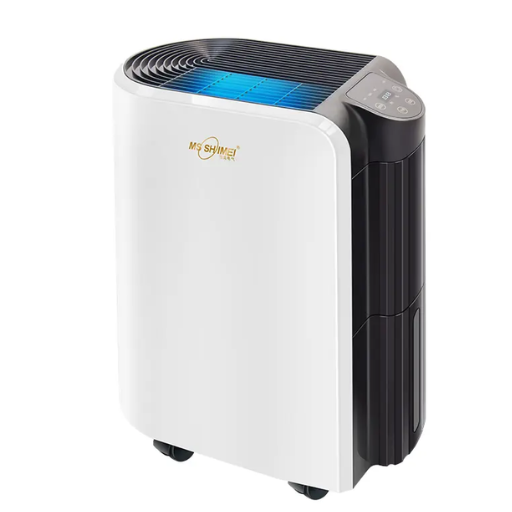
The cost to install a whole-house dehumidifier typically ranges between $1,000 and $2,500. This price includes the unit itself, which generally costs $800 to $1,800 depending on capacity and features, as well as professional installation, which can add $200 to $700. Variables such as the size of your home, the complexity of the installation, and local labor rates can influence the final cost. Investing in a whole-house dehumidifier can significantly improve indoor air quality and comfort, making it a worthwhile addition to many homes.
Exploring Whole-House Dehumidifier Costs
The cost of a whole-house dehumidifier is influenced by several factors, each playing a critical role in determining overall expenses. Here is a closer examination of these key elements:
- Unit Capacity and Features
Whole-house dehumidifiers come in a range of capacities, typically measured in pints of moisture removed per day. Lower-capacity units (e.g., around 70 pints per day) generally cost less, ranging from $800 to $1,000, while high-capacity units (120 pints per day or more) can climb to $1,500 or higher. Additional features, such as built-in air purifiers, digital controls, Wi-Fi connectivity, and energy-efficiency certifications, can further increase the price.
- Installation Complexity
Professional installation costs vary based on the complexity of the project. Basic installations, like connecting the unit to an existing HVAC system, might cost $200 to $400. However, if the system requires ductwork modifications, electrical wiring upgrades, or drainage setup, installation costs can escalate to $500 or even $700.
- Energy Efficiency and Long-Term Savings
Models with higher energy efficiency ratings may have higher upfront costs but provide substantial savings over time. For example, ENERGY STAR®-certified units can reduce energy consumption by 20%, significantly lowering utility bills in humid climates. While these units may cost an additional $100 to $300 initially, the long-term savings often offset the investment.
- Maintenance and Lifespan
The cost of maintaining a whole-house dehumidifier also affects long-term expenses. Annual maintenance, including replacing air filters and professional servicing, might cost $100 to $300. A well-maintained unit can last 8 to 10 years, providing reliable performance over its lifespan.
- Regional Factors
Local labor rates and material costs contribute to regional price variations. For instance, areas with higher costs of living or harsher humidity conditions may face higher installation and maintenance expenses. Researching local contractors and obtaining multiple estimates can help homeowners find competitive pricing.
By understanding these variables in detail, homeowners can better gauge the total investment required for a whole-house dehumidifier and tailor their choices to fit both their needs and their budget.
Factors Influencing Installation Costs
- Size and Capacity of the Dehumidifier
Larger, higher-capacity dehumidifiers are often more expensive to install due to the additional labor, materials, and adjustments needed. For instance, a unit designed for a 3,000-square-foot home requires more extensive ductwork and power connections than one for a smaller space.
- Type of Dehumidifier
The type of dehumidifier also impacts cost. Whole-house systems that integrate with HVAC units are usually more intricate and labor-intensive to install compared to standalone models, potentially increasing installation expenses by 20-30%.
- Existing HVAC System Compatibility
If the dehumidifier is incompatible with the current HVAC system, modifications may be needed. This can include upgrading ductwork, electrical wiring, or installing new components, which may add $500–$2,000 to the total cost.
- Location and Accessibility
Installing a unit in a difficult-to-access area, such as a cramped crawl space or attic, can require additional labor hours and specialized equipment. This can increase the cost by 10–15% compared to more accessible locations.
- Local Labor Rates
Installation costs vary significantly by region due to differences in labor rates. For example, homeowners in major metropolitan areas may pay up to 40% more for installation compared to those in rural areas.
- Permits and Inspection Fees
Some areas require permits or inspections for major home installations. Permit and inspection fees can range from $50 to $300 depending on local regulations.
- Additional Features or Customizations
Adding advanced features like smart controls, humidity sensors, or custom ductwork can lead to additional costs. These upgrades might add $200–$1,000 to the final price depending on the complexity of the enhancements.
- Warranty and Service Packages
Opting for extended warranties or including a service package for ongoing maintenance and repairs can contribute an additional $100–$500 at the time of installation.
Considering these factors, homeowners should carefully evaluate their needs and consult with professionals to determine the most cost-effective solution.
Comparing Whole-House vs. Crawl Space Dehumidifiers
Whole-house dehumidifiers cover the entire home via HVAC systems, while crawl space dehumidifiers target specific areas like basements or crawl spaces.
| Parameter | Whole-House | Crawl Space |
|---|---|---|
|
Coverage |
Entire home |
Crawl space only |
|
Installation |
HVAC integration |
Standalone setup |
|
Cost |
Higher upfront |
Lower upfront |
|
Moisture Target |
General air |
Foundation moisture |
|
Air Distribution |
HVAC ducts |
Localized |
|
Best For |
Large homes |
Damp crawl spaces |
How to Choose the Best Crawl Space Dehumidifier for Your Needs?
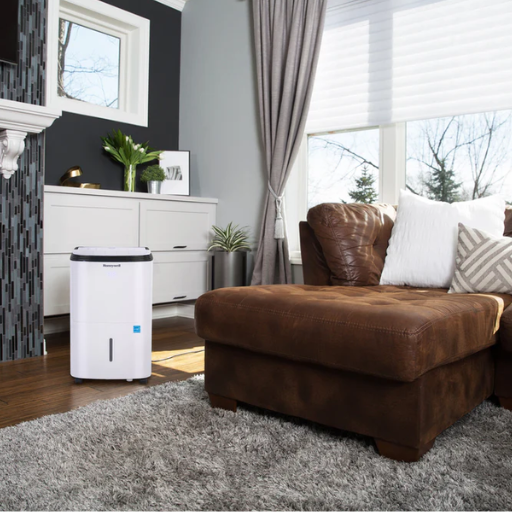
Choosing the right crawl space dehumidifier involves considering several key factors to ensure it meets your specific needs:
- Crawl Space Size
Measure the dimensions of your crawl space and check the dehumidifier’s capacity in terms of square footage coverage. Select a model designed for spaces equal to or slightly larger than the size of your crawl space.
- Humidity Levels
Assess the average humidity in your crawl space. Dehumidifiers with higher moisture removal rates (measured in pints per day) are ideal for more humid environments.
- Energy Efficiency
Look for ENERGY STAR®-rated models that save on electricity costs without compromising performance.
- Drainage Options
Choose a dehumidifier with an appropriate drainage system, such as built-in pumps for continuous drainage or gravity-drain options, to prevent the need for frequent manual emptying.
- Durability and Build
Ensure the unit is built with durable materials to handle damp environments and potential temperature fluctuations common in crawl spaces.
- Noise Level
Compare noise levels among models, especially if the crawl space is near living areas, for quieter operation.
By focusing on these factors, you can select a reliable and effective dehumidifier that protects your crawl space from moisture-related problems while maintaining long-term efficiency.
Evaluating Pint Capacity and PPD
When selecting a dehumidifier for your crawl space, understanding pint capacity and PPD (pints per day) is crucial for ensuring effective moisture control. Pint capacity refers to the amount of water, typically in pints, that a dehumidifier can remove from the air within 24 hours under standardized conditions. PPD is closely related but can vary based on temperature and humidity levels, usually measured under specific conditions like 80°F and 60% relative humidity.
Industry standards suggest that for a small crawl space with mild humidity, a unit with a capacity of 20-30 PPD might suffice. However, for larger spaces or areas with high humidity problems, a dehumidifier with 50-70 PPD or more is recommended. For example, units like the Aprilaire 1850 Pro, with a 95 PPD capacity, excel in managing severe moisture issues in expansive crawl spaces up to 5,200 square feet.
It is also essential to match the dehumidifier’s capacity to the actual conditions of your crawl space. High-efficiency models, such as Energy Star-rated options, provide excellent moisture removal without excessive energy consumption, making them ideal for long-term use. By aligning the PPD rating with the specific needs of your space, you can maintain a healthier environment and prevent moisture-related damage effectively.
The Role of Drainage and Hose Options
Effective drainage is a critical factor in ensuring that your dehumidifier operates smoothly and efficiently. Most modern dehumidifiers offer two primary drainage options—manual removal and continuous drainage via a hose. Manual drainage typically involves removing and emptying the water tank, which can be time-consuming and inconvenient, especially in high-humidity areas. On the other hand, continuous drainage systems allow the collected moisture to be automatically expelled through a connected hose, eliminating the need for frequent emptying.
When considering hose options, it’s essential to evaluate the length and compatibility of the hose provided with your dehumidifier. Many models are equipped with standard garden hose connections, making it easier to connect your unit to a drain. For optimal drainage efficiency, ensure the hose is laid at a slope to facilitate proper water flow and prevent buildup.
Data from industry reports indicate that continuous drain systems can significantly improve operational convenience, allowing the dehumidifier to run uninterrupted for extended periods. Additionally, using models with built-in pumps can further streamline the drainage process as they allow water to be expelled vertically, ideal for homes with elevated or distant drainage points. By prioritizing appropriate drainage mechanisms for your crawl space, you can achieve consistent performance while reducing the hassle of maintenance.
Considering Energy Efficiency and Energy Star Ratings
When selecting a dehumidifier for your crawl space, energy efficiency should be a primary factor to ensure optimal performance without incurring high utility costs. Dehumidifiers with the Energy Star certification have been independently tested and proven to meet strict energy efficiency guidelines established by the U.S. Environmental Protection Agency (EPA). According to recent standards, these models are approximately 15% more efficient than conventional units, reducing both your energy consumption and environmental impact.
For example, a standard dehumidifier may use 400 to 600 watts of power, while an Energy Star-rated unit of similar capacity could operate using 15% less energy annually. This translates to noticeable savings on electricity bills over time, particularly for units running continuously in high-moisture environments like crawl spaces.
Additionally, newer Energy Star dehumidifiers often include advanced features such as adjustable humidity controls, timers, and innovative designs that promote quieter and more efficient operation. These upgrades not only improve usability but also help maintain energy efficiency long-term. Opting for models with these certifications delivers measurable financial savings while contributing to a more sustainable home, ensuring your crawl space remains dry and energy efficient simultaneously.
How to Choose the Best Crawl Space Dehumidifier for Your Needs?
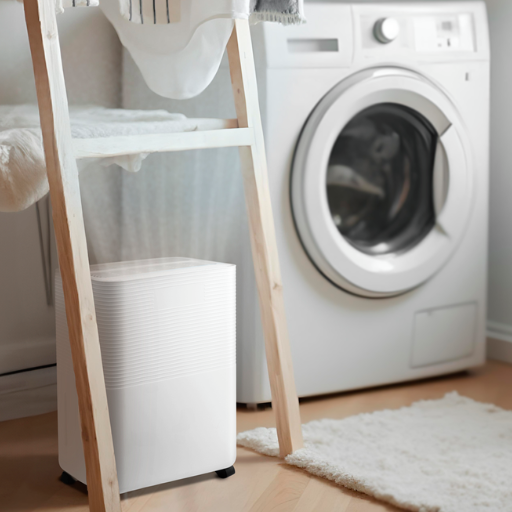
Yes, installing a crawl space dehumidifier is worth the investment for most homeowners. By controlling excess moisture, it prevents issues like mold growth, wood rot, and poor indoor air quality, which can lead to costly repairs and health concerns. Additionally, a properly installed unit helps improve your home’s overall energy efficiency and can extend the lifespan of your HVAC system. While the upfront cost may seem significant, the long-term benefits of preserving your home’s structural integrity and maintaining a healthy living environment outweigh the expense.
Long-Term Benefits of Dehumidification
- Prevention of Mold and Mildew Growth
Excess moisture in your home creates the perfect environment for mold and mildew to thrive. Dehumidification reduces this risk significantly, maintaining a cleaner and safer living space. According to the Environmental Protection Agency (EPA), keeping relative humidity below 60% helps prevent mold growth, which can lead to health issues like allergies and respiratory problems.
- Improved Indoor Air Quality
By regulating humidity levels, dehumidifiers minimize airborne allergens, such as dust mites and mold spores, contributing to cleaner and healthier air. Research highlights that poor air quality caused by humidity can exacerbate conditions like asthma and allergies, making dehumidification a practical solution, particularly for sensitive individuals.
- Prolonged Lifespan of Furniture and Structural Elements
High humidity can take a toll on your home’s structural components, such as wooden floors, walls, and furniture, causing warping and decay over time. Dehumidifying your space protects these elements, preserving the longevity of your home and its contents.
- Energy Efficiency and Cost Savings
Maintaining balanced humidity levels allows your HVAC system to work more effectively, as extremely humid conditions increase cooling demands. With a properly functioning dehumidifier, studies show energy savings of up to 10-15% on cooling costs during warmer months.
- Enhanced Comfort
High humidity often makes a space feel hotter and heavier, creating discomfort even at reasonable temperatures. Dehumidification alleviates this by reducing excess moisture, allowing occupants to feel cooler and more relaxed without solely relying on air conditioning.
- Protection Against Pests
Many pests, such as termites, cockroaches, and silverfish, thrive in moist environments. By controlling humidity, you significantly reduce the likelihood of pest infestation, minimizing potential damage and the need for pest control services.
- Healthier Living Environment
Excessive humidity can lead to condensation issues, fostering conditions for organic growth or bacteria. Studies detail that a humidity range of 30-50% is optimal for reducing health risks and creating a harmonious indoor environment.
By addressing both immediate and long-term concerns, dehumidification proves to be an investment that enhances your home’s durability, energy efficiency, and the well-being of everyone inside.
Impact on HVAC Systems and Energy Costs
When it comes to HVAC systems and energy costs, I’ve noticed that controlling humidity makes a big difference. High humidity forces HVAC systems to work harder, which not only increases energy consumption but also shortens the lifespan of the equipment. By using a dehumidifier, I’ve seen my HVAC system operate more efficiently, maintaining a comfortable indoor climate without overexertion. This has helped me lower energy bills and reduce wear and tear on my system, ultimately saving money in both the short and long term.
Return on Investment Through Mold Prevention
Investing in mold prevention has been one of the smartest decisions I’ve made for my home. By controlling humidity levels and addressing moisture issues proactively, I’ve avoided costly mold remediation expenses and potential damage to my property. Not only does this protect the structural integrity of my home, but it also safeguards my family’s health, reducing risks associated with mold exposure. The upfront costs of dehumidifiers and proper ventilation systems have been far outweighed by the long-term savings and peace of mind they provide.
Reference Sources
-
Improving the energy efficiency of dehumidification technology at a large facility in Florida – Discusses cost-effective dehumidification technologies.
-
Further Investigation Of Energy And Performance Impacts Of Whole-House Dehumidifier Duct Configurations – Explores energy and cost impacts of dehumidifier configurations.
-
Energy-Efficient Management of Mechanical Ventilation and Relative Humidity in Hot-Humid Climates – Examines cost differences in dehumidifier setups.
-
Investigation of Energy Impacts of Whole-House Ducted Dehumidifier Location – Analyzes cost and energy impacts of ducted dehumidifiers.
-
Impact of Residential Mechanical Ventilation on Energy Cost and Humidity Control – Reviews energy costs and humidity control in residential settings.
Frequently Asked Questions (FAQs)
Q: What is the typical crawl space dehumidifier cost?
A: The typical crawl space dehumidifier cost can range from $800 to $1,500, depending on the brand, capacity, and additional features like a condensate pump or remote control.
Q: What are the cost factors for a crawl space dehumidifier?
A: Cost factors include the type of dehumidifier, its capacity (measured in pints per day), energy efficiency, and additional features such as a built-in pump or ducted system. Installation costs and any necessary modifications to the crawlspace can also affect the total cost.
Q: How much does it cost to install a dehumidifier in a crawl space?
A: To install a dehumidifier in a crawl space, you can expect to pay between $300 and $700 for professional installation. This cost can vary based on the complexity of the installation and any additional work required to seal the crawlspace.
Q: Should I consider a basement dehumidifier instead of a crawl space dehumidifier?
A: If you have moisture issues in both your basement and crawlspace, a basement dehumidifier might be a viable option. However, a dehumidifier specifically designed for crawl spaces is often more efficient for that environment due to its compact size and capability to handle lower temperatures.
Q: What are the benefits of using a commercial dehumidifier in a crawlspace?
A: A commercial dehumidifier can handle larger spaces and higher humidity levels, making it ideal for larger crawl spaces or areas prone to severe moisture issues. They often come with features like a condensate pump and are more robust than residential models.
Q: Is an Alorair Sentinel a good choice for a crawl space dehumidifier?
A: Yes, the Alorair Sentinel series is a popular choice for crawl spaces due to its durability, energy efficiency, and features like a built-in condensate pump. It’s designed to efficiently remove moisture in sealed crawl spaces.
Q: Can a whole house dehumidifier replace a dehumidifier for a crawl space?
A: While a whole house dehumidifier can help manage humidity levels throughout the home, a dedicated dehumidifier for a crawl space is typically more effective at targeting and managing moisture in that specific area due to its tailored design.
Q: How do I maintain a crawl space dehumidifier?
A: Regular maintenance of a crawl space dehumidifier includes cleaning or replacing filters, ensuring the drain hose or condensate pump is functioning correctly, and occasionally inspecting for any signs of wear or damage. Regular maintenance ensures optimal performance and longevity.
Q: What is the importance of a dehumidifier with a pump for a crawl space?
A: A dehumidifier with a pump is beneficial for a crawl space as it allows for automatic drainage of collected water, which is crucial in areas where gravity drainage isn’t possible. This feature helps maintain consistent dehumidification without requiring manual drainage.

